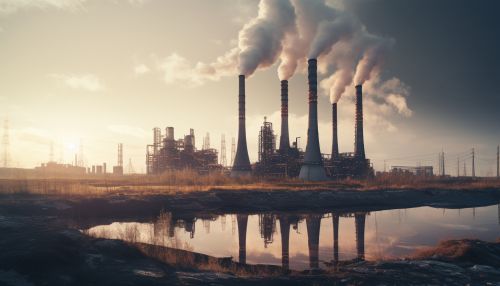Carbon Capture and Storage Technologies
Introduction
Carbon capture and storage (CCS) is a technology that can capture up to 90% of the carbon dioxide (CO2) emissions produced from the use of fossil fuels in electricity generation and industrial processes, preventing the CO2 from entering the atmosphere. The captured CO2 is then transported and stored underground in geological formations.


Carbon Capture
The first step in CCS is the capture of carbon dioxide. There are three main methods for capturing CO2: post-combustion, pre-combustion, and oxy-fuel combustion.
Post-Combustion Capture
Post-combustion capture involves removing CO2 from flue gases after combustion. The most common technology used is amine-based absorption, where a chemical solvent (usually an amine) absorbs the CO2 from the flue gas. The solvent is then heated to release the CO2 in a process known as regeneration, allowing the solvent to be reused.
Pre-Combustion Capture
In pre-combustion capture, the fuel is first converted into a mixture of hydrogen and carbon monoxide, known as syngas, in a process called gasification. The carbon monoxide is then reacted with steam to produce CO2, which can be captured and stored, and hydrogen, which can be used as a clean fuel.
Oxy-Fuel Combustion
Oxy-fuel combustion involves burning the fuel in pure oxygen instead of air. This results in a flue gas that is mainly CO2 and water, which can be easily separated to produce a stream of almost pure CO2 for storage.
Carbon Transportation
Once captured, the CO2 must be transported to a storage site. This is usually done via pipelines, which can transport large volumes of CO2 over long distances. The CO2 is compressed to a dense phase (either a liquid or a supercritical fluid) to reduce the volume and make transportation more efficient.
Carbon Storage
The final step in CCS is the storage of CO2. This is typically done in deep geological formations, such as depleted oil and gas fields or deep saline aquifers. The CO2 is injected into these formations, where it is trapped and stored for long periods of time.
Geological Storage
Geological storage involves injecting CO2 into rock formations deep underground. The CO2 is usually stored in a supercritical state, where it behaves like a dense fluid. This allows it to occupy the pore spaces in the rock, displacing any fluids that are already present.
Ocean Storage
Ocean storage is another potential method for storing CO2. This involves injecting the CO2 into the deep ocean, where it dissolves in the water and is eventually taken up by marine organisms.
Challenges and Future Directions
While CCS has the potential to significantly reduce CO2 emissions, there are several challenges that must be overcome. These include the high cost of capture technologies, the need for extensive infrastructure for transportation and storage, and the risk of leakage from storage sites.
Despite these challenges, research and development in CCS technologies continues, with a focus on reducing costs, improving efficiency, and ensuring the safety and integrity of storage sites.
